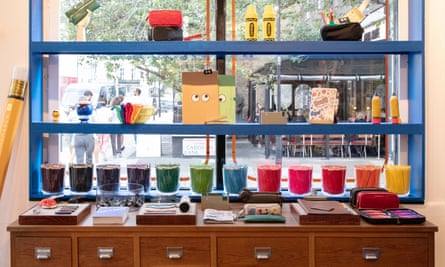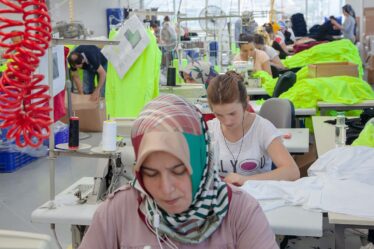
Forget designer sneakers. Nowadays you’re more likely to find Gen Z and millennials raving about their latest stationery finds.
TikTok reports a surge in interest, with the hashtag #stationeryhauls racking up more than 300 million views. Meanwhile, retailers including John Lewis say there has been a boom in demand, while the fashion designer Anya Hindmarch recently unveiled a stationery pop-up store in Belgravia, central London, featuring bespoke bookmarks and notebooks.
Neal Whittington, the founder of Present & Correct, a boutique stationer near Clerkenwell, in east London, believes the surge in interest from these age groups in an old-school pen and paper habit is a rebellion against digital demands.
“It comes down to them being more aware of screen time use and trying to fight against it. They don’t want to be always online, doing everything on their laptop or phone. There are now specific products, such as wellness journals, aimed at them,” he says.
Retailers initially reported a spike in stationery sales during the first lockdown of 2020. Papier, a British-founded e-commerce stationery start-up, says it witnessed a 300% increase in sales of notecards and writing paper, but the trend has continued into 2022. It now counts millennials as its biggest demographic at 53% of all sales, while Gen Z users are its fastest-growing segment. A spokesperson for the brand says: “Sales suggest that analogue practices such as writing letters and keeping a paper diary are far from obsolete. The desire for tangible, physical objects persists.”
The Italian luxury papermaker Moleskine is focusing on younger customers too. Its CEO, Daniela Riccardi, recently formed a Gen Z panel to help its leadership team better understand a different generation.
Meg Parker, a 25-year-old law graduate from Devon, has turned her stationery hobby into a full-time job. She initially joined TikTok to see if anyone would be interested in buying her aesthetically pleasing study notes. However, it was the filming of her Bullet journals (colour-coded notebooks where users log everything from emotions to work tasks) that “opened up a whole new world”.
Since January she has amassed more than 120,000 followers on YouTube and regularly works with brands including Paperchase. “There is so much stationery available you can never get bored. People especially love my ASMR [autonomous sensory meridian response, or tingling sensation]-inspired ones. The clicking sounds of pens and the noise of colouring in is really satisfying.”
Of course, the irony of buying stationery to then post about it online isn’t lost on sellers and users. While transparent pencil cases are the most popular buy at Hindmarch’s store, it is snaps of the whale-shaped rulers and giant Pritt stick pencil cases that are all over Instagram.
Whittington regularly has customers who come into his store to buy items to create carefully curated flatlays (images shot from above of arranged objects). Stationery fans boast of limited-edition drops of Kaweco pens and Blackwing pencils. They also photograph the store’s neatly stocked shelves.
As we witness a wider trend of comfort and nostalgia (think retro TV shows and wideslung jeans making a comeback) it’s not surprising that stationery is now in the spotlight.
Former editor-in-chief of Vanity Fair, Graydon Carter and his wife Anna recently launched Electragram. The online stationery company features vintage-inspired templates based on original Western Union telegrams. “We do things the old-fashioned way, but deliver them the new-fangled way,” reads a tagline.
Whittington also credits sentimentality in the interest around 1970s metal protractors and letter openers that he stocks. “Younger people come in and ask what things are because they didn’t grow up using them. It’s great but it does make me feel old.”



